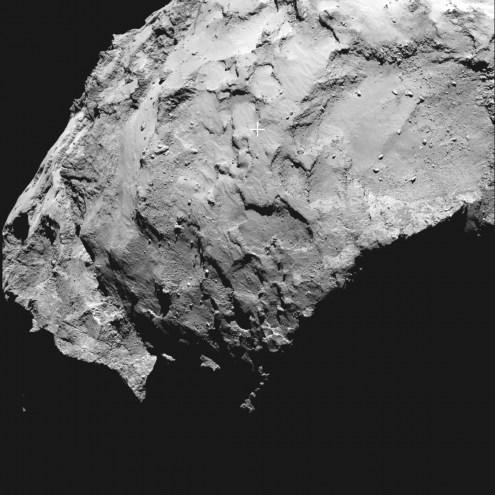Rosetta landing site chosen
By Oli Usher, on 15 September 2014

The landing site for Philae, the lander component of the Rosetta mission, has been chosen and is marked here with a white cross. Photo credit: ESA
The Rosetta mission, which for the past decade has been on a long and convoluted journey to Comet C-G, has recently reached its destination. It is the only artificial object ever to enter orbit around a comet, and is currently circling around it at an altitude of around 30km. (The cometary nucleus itself is around 4km across.)
Part of Rosetta’s mission is to measure the properties of the plasma (electrically charged gas) that surrounds the comet. To this end, the spacecraft features a suite of five sensors built by the Rosetta Plasma Consortium, a scientific collaboration that includes UCL’s Prof Andrew Coates.
But as well as measuring the plasma around the comet, Rosetta will attempt something never achieved before: it will release a lander that, later this year, will touch down on the comet’s surface. The European Space Agency has today announced the site that the lander, known as Philae, will aim for: a spot known as Site J, pinpointed in the photo above with a white cross. The landing site was chosen as the best compromise between safety (the surface of the comet is uneven in places and could damage the probe) and scientific interest (some parts are more active than others).
Copyright: ESA images are free to use providing they are credited, do not imply endorsement by ESA, do not feature identifiable individuals, and are not used in advertising or promotional materials.
 Close
Close


